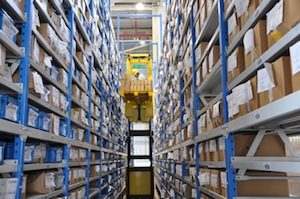UK aftermarket still growing
 UK motorists spend a collective £21.1 billion ($30.7 billion) a year on servicing and repairing their vehicles, according to a new report by the Society of Motor Manufacturers and Traders (SMMT).
UK motorists spend a collective £21.1 billion ($30.7 billion) a year on servicing and repairing their vehicles, according to a new report by the Society of Motor Manufacturers and Traders (SMMT).
There are more than 42,500 vehicle service and repair locations in the UK and the aftermarket is diverse and very competitive. There's a strong, franchised dealer network and 64% of maintenance and repair is carried out by independently-owned businesses – the highest figure in Europe. Consumers have options and prices can vary wildly: the parts and labour costs at independent outlets can be up to 65% and 45% lower respectively.
The Importance of the Aftermarket to the UK Economy report, commissioned by the SMMT from consultancy Frost & Sullivan, shows that on average, UK motorists spend £695.39 a year on car maintenance – 12% higher than the average global spend per car of £621.62.
As the number and age of vehicles on UK roads continue to increase thanks to buoyant new vehicle sales and better quality servicing techniques, the UK aftermarket is projected to grow to a value of £28 billion by 2022, with an employee base of around 400,000. The average age of a UK vehicle is now approximately 7.8 years, compared to a European average of 9.4 years. This is expected to reach 8.1 years by 2022 as cars become more durable. While the franchised aftermarket opportunity reduces as consumers migrate to independent companies for cost reasons, the use of more expensive technologies has a downward influence on when ageing cars can be cost-effectively repaired.
The UK has a highly diverse range of brands, which presents a challenge for aftermarket suppliers in terms of parts coverage. The number of different parts is high and suppliers have to source and keep the inventory needed to meet the 'all-makes-and-models' benchmark. If a part isn't in stock, a consumer will simply go elsewhere.
There are more than 30m vehicles in use in the UK and this is set to continue growing. All these require regular servicing and maintenance and it is expected that by 2022, the UK will be the third largest aftermarket in Europe, overtaking France. It is already the eighth largest sector of its kind in the world, with a bigger aftermarket than Brazil, Korea, Canada and India.
Mike Hawes, chief executive, SMMT said: “The UK's aftermarket is one of the most competitive in the world and plays a critical role in keeping Britain's 30m-plus cars roadworthy. Robust competition and a strong independent sector have helped reduce the cost of vehicle ownership in the UK and provided greater choice to consumers. For this growth to be sustained, however, the sector must stay abreast of evolving vehicle technologies and changing mobility patterns.”
Car buying is changingOver the next few years, new challenges and opportunities will present themselves in the UK aftermarket as the way people buy and use cars changes. Leasing and a longer-term trend from car ownership to 'usership' will require new business models, while vehicle connectivity advances will present business opportunities for those happy to embrace the technological change. As over-the-air diagnostic alerts and updates could help to regulate the maintenance schedule for car owners, this could help OEMs hold on to aftermarket business. Companies will have to access customer data via the car and develop digital solutions, which will be easier to access by manufacturers than by independent companies.
Retail is also going online. Motorists are using the internet more and more to compare prices and products and schedule maintenance work. The UK aftermarket has the highest penetration of online retail for automotive parts and services at 7%, ahead of Germany (5%) and France (4%). Traditional aftermarket companies, including Halfords, Euro Car Parts and The Parts Alliance, have introduced their own online retail channels to respond to the change. New companies have also come to the market including Blackcircles and Goodyear's direct eStore. Amazon and eBay are also key players, holding around a 10% share of the £800m online UK automotive parts and service market.
There is also the opportunity for UK companies to export parts, especially as online aftermarket spaces grow. Africa and the Middle East are two regions where UK companies could find new markets. Saudi Arabia imports 100% of its spare automotive parts from Germany, Japan and the US, among other countries. And African nations are importing millions of scrapped vehicles that have been traded in and auctioned.





